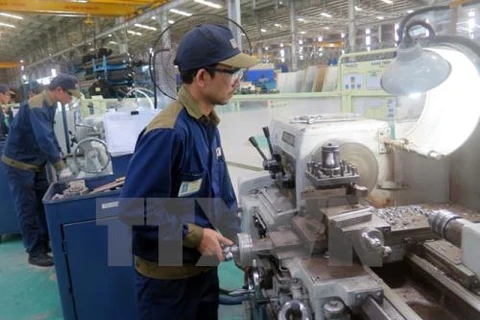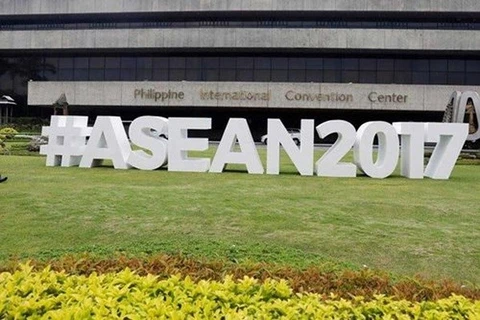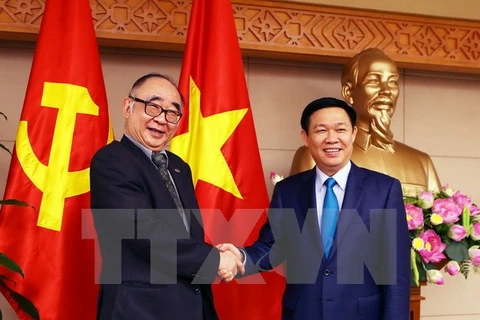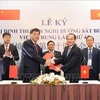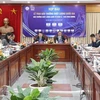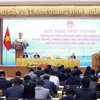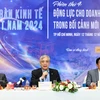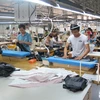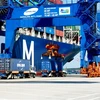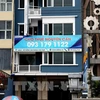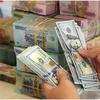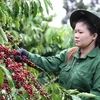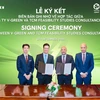Hanoi (VNA) – “ASEAN at 50: ASEAN Economic Community and the Opportunities for Vietnamese Businesses” is the theme of a conference held by the Foreign Ministry in Hanoi on July 19 to mark the 50th founding anniversary of the ten-member group (August 8).
In his opening remarks, Assistant to the Foreign Minister Vu Quang Minh said the formation of the ASEAN Economic Community (AEC) marked a new step of integration of ASEAN economies, aiming to build an ASEAN economic space of connectivity, competitiveness, dynamism and innovation with people as the centre.
He underlined the need for businesses to understand opportunities and challenges following the birth of the AEC.
However, Minh said, only 16 percent of Vietnamese enterprises have knowledge about the community, adding that the conference will offer an opportunity for leaders, researchers and firms to seek ways to help the business circle bring into full play the opportunities and cope with the challenges.
Prof. Hidetoshi Nishimura, President of the Economic Research Institute for ASEAN and East Asia (ERIA), said ASEAN has recorded great achievements over the past half a century, ensuring regional peace and stability.
ASEAN is working hard to implement a single market and a production base, hence bringing opportunities to all of its member countries and residents, he said.
Deputy Foreign Minister Nguyen Quoc Dung said ASEAN has become Vietnam’s second trade partner with an average growth rate of 14.5 percent over the past decade.
Trade between Vietnam and ASEAN increased from about 19 billion USD in 2006 to 41.36 billion USD in 2016, he said, adding that ASEAN is Vietnam’s third largest market and third largest supplier of goods.
ASEAN is also Vietnam’s important foreign direct investment provider with total registered capital of 64 billion USD and a bridge for multi-national companies based in ASEAN to invest in the country, the official said.
ASEAN-invested projects in Vietnam mainly focus on production, processing and manufacturing, Dung said, stressing that ASEAN has become one of the impulses helping Vietnam maintain its sustainable economic growth rate.
ASEAN Secretary General Le Luong Minh described ASEAN as an attractive destination for foreign investors and the world’s six largest economy with a population of 640 million.
He, however, pointed out an array of difficulties facing the group such as development gap between member countries and differences in development goals, laws, institutions and awareness of people and the business circle.
Besides, the nations also face other problems like aging population, middle-income trap, inequality and non-traditional threats, Minh noted.
He said since joining the group, Vietnam has stepped up cooperation with other member countries and participated more deeply in the global value chain, as reflected through its engagement in the Trans-Pacific Partnership (TPP) agreement, negotiations of the Regional Comprehensive Economic Partnership (RECP) agreement and signing of free trade agreements with the EU and the Eurasian Economic Union.
Deputy Foreign Minister Dung said realising the AEC at a new development level is the task of Governments of ASEAN member countries as well as the business circle.
Besides, it is necessary for the Governments to make all-out efforts to narrow development gaps within ASEAN as well as between ASEAN and other regions, promote economic integration to improve the group’s competitiveness and enhance infrastructure connectivity, he said.
Dung emphasised the Vietnamese Government’s commitment to further renovating and reforming the economy, which, he said, has been demonstrated through its efforts to build a transparent and facilitating Government.–VNA
VNA



